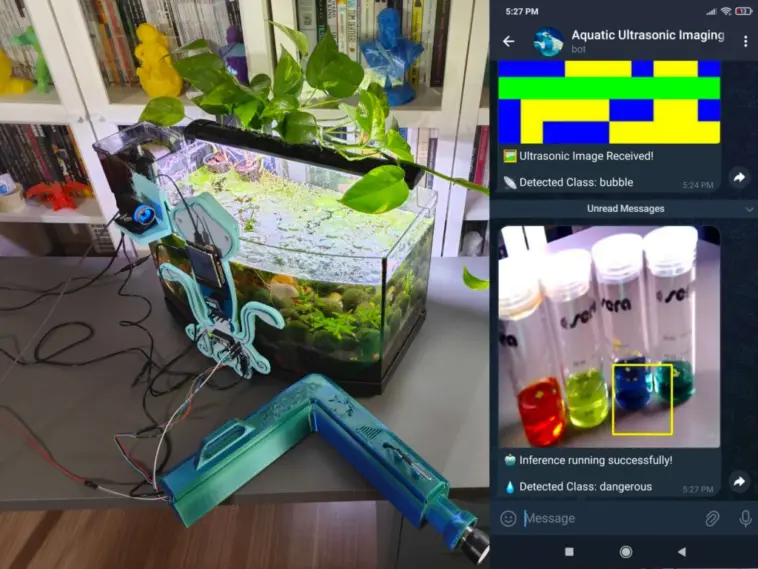
Below the surface of any body of water, harmful amounts of toxic gases and contaminates can accumulate, which leads to a loss in fish and plant populations if not fixed quickly. But because most water testing, especially in aquariums, is done primarily on the surface, vital information gets missed. Kutluhan Aktar’s automated testing system aims to address these concerns through its harnessing of both ultrasonic sensors and computer vision data being fed into two AI models.
Everything started with an Arduino Nano ESP32 board connected to a 75KHz ultrasonic sensor and DS18B20 temperature sensor. Aktar then took many readings of his aquarium utilizing the sensor to produce several 20×20-point maps, which were uploaded to the Edge Impulse Studio and used to create a classification model. Once trained, the model was deployed to the Nano ESP32 so that it could inform the user if there were any toxin-containing bubbles present in the tank.
The other half of the monitoring system consists of a DFRobot UNIHIKER single-board computer running a RetinaNet model that detects and classifies chemical tests as either sterile, dangerous, or polluted. The results from it and the Nano ESP32 are combined, presented on a large screen, and sent to users via a Telegram bot.
More information about the project can be found in Atari’s detailed write-up on Hackster.io.
The post Assess your aquarium’s health with an AI-enabled ultrasonic sensor appeared first on Arduino Blog.
Website: LINK


